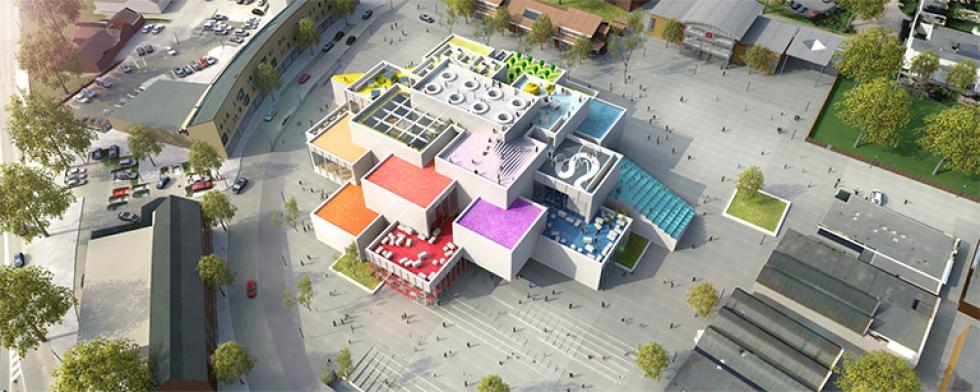

It’s easy to underestimate the power of play and how it shapes our view of the wider world. In fact, the more you look around at the built environment, the more you might spot the echoes of childhood present in the shapes of buildings and the method of their construction.
This much is certainly visible in the work of Richard Rogers and Bjarke Ingels, for whom experimenting with construction toys during their formative years seems to have had an effect on the designers they are today.
Rogers is an architect who grew up with a Meccano playset; a toy which is all about function and, as the name suggests, the mechanical. It’s the ‘toolkit of the toy-box’, if you like, and perfect for aspiring engineers.

When it comes to Bjarke Ingels, the influence of LEGO is even more apparent. In fact his career seems to have now come full circle with Ingels recently designing LEGO’s new ‘hands-on minds-on experience centre’ in his native Denmark

So what about the next generation? What are the kids of today using to build their pretend worlds? Lego, for one, has maintained its popularity, even if it has leaned towards licensed content rather than traditional ‘city-building’. But how about the virtual world? Both The Sims and SimCity have proven to be popular franchises, but the design can generally be classified as ‘American suburbia’. Second Life is aesthetically more versatile, but is perhaps a bit too niche and lacks that instant accessibility for creating content.
No, when it comes to virtual world building there is one ‘game’ to rule them all, Minecraft.

It may not look as sophisticated as its console gaming contemporaries; the realm of minecraft is a blocky one, with block shaped earth and block shaped clouds. You can even count the pixels on the textures that adorn the surfaces of rocks and trees. (I should add that Minecraft can be ‘modified’ to add some visual sparkle and utilise high-resolution textures, but the lo-fi graphic stylings remain). Dig beneath the surface however (pun intended) and you’ll soon discover a blank world-building canvas that is both malleable and collaborative.
There is no goal, as such, in Minecraft. Instead there are two main game modes; Survival and Creative. It’s the second of these modes where the comparisons with LEGO are strongest. You won’t ever see a ‘Game Over’ screen, instead you’ll fly around the world, placing your infinite supply of blocks and crafting your own structures for as long as you like. You can open your world to a wider community and use your collective efforts to build houses and cities, which might be unique by design or perhaps a recreation of one of the fantastical settings from Game of Thrones!

What’s interesting is that like its playtime predecessors LEGO and Meccano, the imaginary world of Minecraft is seeping over into the ‘real world’. As demonstrated by Benachir Medjdoub on a recent episode of the Culture Show, town planners can now recreate their respective neighbourhoods in Minecraft, then invite residents to contribute and suggest changes. Whether it be lighting an underpass to make you feel safer, or developing brownfield sites to regenerate areas that have fallen into disrepair. It has become a viable collaborative tool for impacting real world environments.
But what of the designers of the future, who are now just 7 or 8 year old kids experimenting with a game? It’s perhaps this aspect which is most fascinating. With an unlimited supply of building blocks, an active imagination and a naive yet optimistic view of the future, what kind of living spaces do children create? What is apparent in many of the environments created so far is an embracing of natural surroundings. Wooden bridges cut a meandering path through the sky, linking the mountains with stone skyscrapers. Self-sufficient underwater dwelling (with lava fuelled heating) is to be embraced rather than feared! Practical? No, but it’s an innocent outlook and one that holds a wealth of promise and imagination. And who knows, perhaps we’ll see echoes of their vision in the cities of tomorrow!
Alex Farrell
05 November 2014